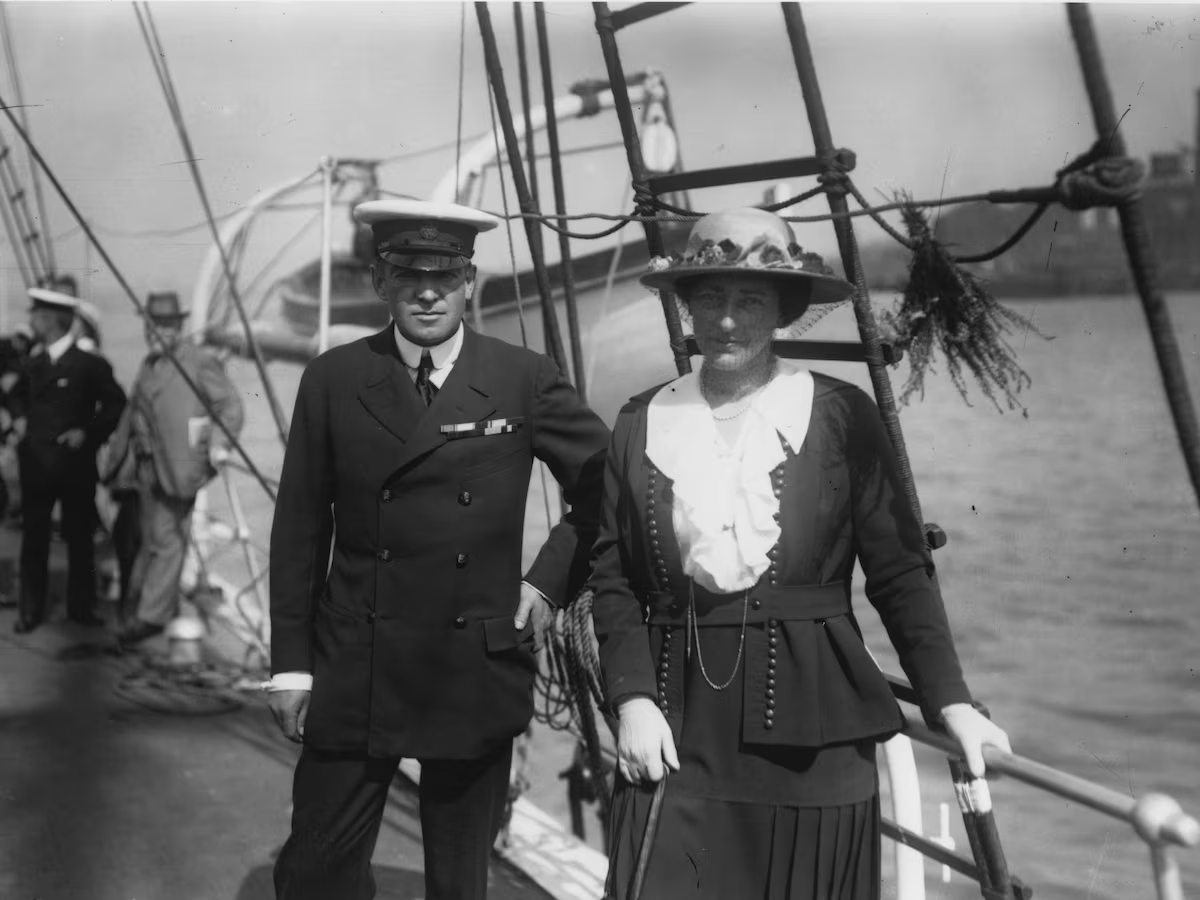
Irish explorer Sir Ernest Shackleton (1874-1922) and his wife Lady Emily Shackleton on board SS Endurance at Millwall Docks, London, England before leaving for the Antarctic, 1914. TOPICAL PRESS AGENCY/GETTY IMAGES
The renowned polar explorer Sir Ernest Shackleton was planning to move to Canada and become a Canadian, and even bought land here, it emerged Thursday as a plaque in his honour was unveiled in Westminster Abbey in England.
The marble memorial, unveiled by Princess Anne, on the 150th anniversary of Shackleton’s birth, was placed near those of fellow explorers, Sir Francis Drake, the Elizabethan privateer who circumnavigated the globe, and Captain James Cook, who mapped New Zealand and Hawaii, and surveyed the coast of Newfoundland.
Shackleton’s exploits include leading three British expeditions to Antarctica, and heroic attempts to reach the South Pole. He reached within 180 kilometres of the South Pole and ascended Antarctica’s second-highest volcano during one expedition.
But he is most celebrated for surviving in Antarctica against the odds with his entire crew of 28 – which included a stowaway – after they were marooned on the sea ice in glacial conditions for months.
They were stranded during a voyage to achieve the first land crossing of Antarctica via the South Pole, but en route their ship, the Endurance, became trapped in pack ice and then sank in the Weddell Sea in 1915.
In a makeshift camp on the ice, they survived living on penguins, seals and a few of their sled dogs. Shackleton also ordered the ship’s male tabby cat Mrs. Chippy to be shot, which upset some of the crew.
Shackleton then endured a 1,330-kilometre ocean voyage in stormy seas in a lifeboat. With his crew, he set out to uninhabited Elephant Island and then, with a few men, further braved the icy waters, gigantic waves and wind in the largest lifeboat to fetch help for his weakened men in the South Atlantic island of South Georgia. Trekking around 65 km across the ice, they eventually found a whaling station.
John Geiger, chief executive of the Royal Canadian Geographical Society, who attended the unveiling of the memorial stone in Westminster Abbey, said Shackleton’s success keeping his entire crew alive in such perilous conditions was remarkable.
Mr. Geiger, whose books include Frozen In Time: The Fate of the Franklin Expedition, said the honouring of Shackleton was long overdue, coming years after a memorial in Westminster Abbey to Sir John Franklin.
He said Shackleton, who was born in Ireland but moved to England as a boy, was very taken with Canada, conducted speaking tours here and planned an expedition in the Arctic.
“He said it often enough that I’m convinced that he was intending to move to Canada,” Mr. Geiger said. “It was certainly a surprise to me to learn the extent to which he was invested in Canada.”
Mr. Geiger said Shackleton used Ottawa’s Chateau Laurier hotel as a base, and also bought property in Port Arthur, Ont., which is now Thunder Bay.
“He had made a number of visits to Canada and during those visits he spoke to journalists, to the public, about his desire to move to Canada. He was planning to move to Canada, he wanted to be Canadian,” Mr. Geiger said. “He not only was interested in living in Canada, he purchased as an investment property in Canada.”
In an article in a U.S. newspaper, Shackleton wrote: “I freely confess that the microbe of Canadian endeavour and Canadian opportunity has entered my blood and it may be my fortune before long to join the ranks of those who cast their lot in our greater land.”
He was fond of the poems of Robert Service, who moved from Scotland to Canada and lived in a cabin in Yukon, as well as on Vancouver Island.
Mr. Geiger said Shackleton often recited his poetry and said, “Reading his poems one can understand how Canada claims men, and how they ever must follow her lure.”
Shackleton was also very keen to launch an expedition in the Canadian Arctic and had solicited a large donation from the Eaton family to back the endeavour. But even though plans were advanced, the Canadian government unexpectedly removed its support for the voyage after Shackleton had obtained a ship and crew.
He instead returned to the Antarctic for an expedition, but he died of a heart attack in 1922 at age 47 off the coast of South Georgia on board the Quest, the ship he had originally bought for the expedition he planned in Canada’s Arctic.
The unveiling of his memorial stone in Westminster Abbey was attended by Alexandra Shackleton the explorer’s granddaughter, who invited Mr. Geiger. The stone’s sculptor Will Davies incorporated Connemara marble and Kilkenny limestone into the memorial to reflect Shackleton’s Irish heritage. The memorial was inscribed with the names of Shackleton’s expedition ships and his family motto, “fortitudine vincimus” – by endurance we conquer.
MARIE WOOLF
The Globe and Mail, February 15, 2024

